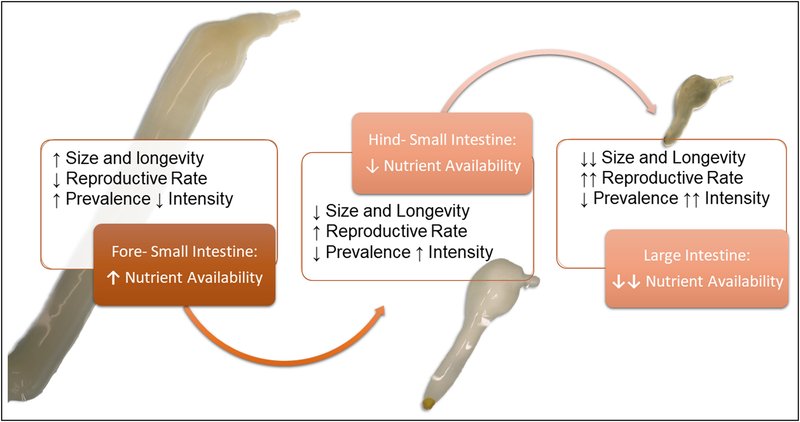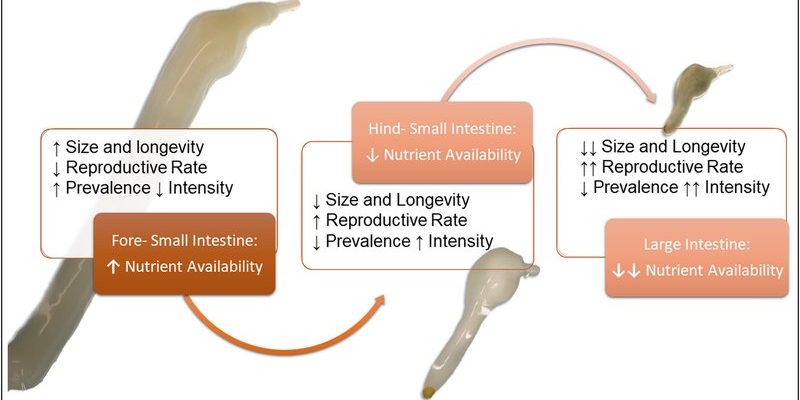
Acanthocephala species are parasitic worms that primarily infect the intestines of vertebrates. But don’t let their resemblance to garden-variety worms fool you; these critters have a complex life cycle involving multiple hosts, including invertebrates and fish. They might not be the most charming of creatures, but understanding their ecological benefits and drawbacks can shine a light on their impact on biodiversity and ecosystem stability. So, let’s dive into this fascinating topic!
What Are Acanthocephala?
Before we jump into their ecological impact, let’s get a clearer picture of what Acanthocephala are. To put it simply, they’re parasitic worms that rely on other animals to complete their life cycle. Imagine this: you’re at a party, and you realize you can’t leave until you’ve made friends with a few people in the room. That’s kind of how these worms operate. They need a host to survive and reproduce, often hitching a ride through different animals.
These worms have a unique structure called a proboscis, which is a spiny appendage helping them latch onto their hosts’ intestinal walls. This design is what sets them apart from other worms. While they might seem super specialized, it also makes them vulnerable. Changes in the environment or host availability can impact their survival. So, while they’re tough little critters, they’re also quite sensitive to ecological shifts.
Understanding their biology is crucial when discussing their ecological roles. They can be found in various habitats, ranging from freshwater to marine environments. This diversity means they can interact with a wide range of organisms, influencing food webs and nutrient cycling.
Positive Ecological Impacts of Acanthocephala
You might be asking yourself, “What good can these worms possibly do?” Surprisingly, Acanthocephala have some ecological benefits worth noting.
Firstly, they can act as a population control agent for certain species. When these worms infect hosts, they can limit overly abundant populations, keeping the ecosystem in balance. For instance, in fish populations, a controlled amount of parasitism can prevent any one species from dominating the environment. It’s like having a referee in a game—keeping things fair and balanced!
Additionally, Acanthocephala can contribute to nutrient cycling. As they break down within their hosts, their nutrients get released back into the environment, making them available for other organisms. This process is essential for maintaining soil fertility and overall ecosystem productivity. Just think of them as nature’s way of recycling!
Lastly, these worms can offer valuable insights into ecosystem health. Scientists often study them to gauge environmental changes, like pollution or habitat destruction. Acanthocephala populations can serve as indicators of broader ecological shifts, helping us understand the effects of human activity on natural systems.
Negative Ecological Impacts of Acanthocephala
While there are benefits to having Acanthocephala around, they also come with their share of drawbacks. For one, these worms can significantly affect their host animals’ health, often leading to malnutrition or even death. This isn’t just an issue for the hosts; it can ripple through the ecosystem. When a key species faces decline, it can disrupt food webs and lead to unforeseen consequences.
Another problem is that Acanthocephala can lower the reproductive success of their hosts. Imagine being so weighed down by a parasite that you can’t focus on raising your young. This has been observed in fish populations infected by these worms, resulting in fewer offspring and weakened future generations. It’s a cycle that can threaten the entire population’s survival, leading to critical losses in biodiversity.
Lastly, as invasive species, Acanthocephala can wreak havoc. When introduced to a new environment, they can outcompete native species and disrupt existing ecological relationships. This can lead to a cascade of changes, altering habitat dynamics and threatening indigenous wildlife. In short, their parasitic nature can sometimes tip the balance in ecosystems where they don’t belong.
The Role of Acanthocephala in Food Webs
Acanthocephala don’t exist in a vacuum—they’re part of the larger food web, influencing and being influenced by various other species. Their life cycle typically involves multiple hosts, which creates connections across different trophic levels.
For example, these worms often begin their life in a small invertebrate, like a crustacean. When a fish consumes the infected invertebrate, the worm then matures inside the fish. This process illustrates the transfer of energy and nutrients through the food web. Each stage of this life cycle impacts the populations and health of the animals involved.
Moreover, predators that feed on infected hosts can also be affected. If a bird, for instance, eats an infected fish, it might take on the worms as well. This can potentially lead to a chain reaction that affects the health of the bird population too.
So, you see, Acanthocephala play a multifaceted role in food webs. Understanding these connections is essential in ecology, especially for conservation efforts.
Human Interactions with Acanthocephala
Humans aren’t immune to the impacts of Acanthocephala. While we might not often come into direct contact with these parasites, our activities can influence their populations and distribution. Overfishing, for instance, can remove key hosts from ecosystems, allowing for unchecked Acanthocephala growth in remaining populations.
In addition, habitat destruction can lead to increased parasitism. As natural habitats are modified or destroyed, the stress on wildlife can make them more susceptible to infections. This could create a feedback loop where their ecological roles become even more pronounced, negatively impacting overall biodiversity.
Interestingly, Acanthocephala have also been used in scientific research as models for studying parasitism. Their relationships with hosts can shed light on disease processes and treatments that may have implications for both animal and human health. So, while they may seem like mere pests, they offer opportunities to understand more significant biological concepts.
Future Considerations for Acanthocephala Populations
As we navigate the challenges posed by climate change and habitat destruction, the future of Acanthocephala populations remains uncertain. Changes in water temperature, pollution, and biodiversity loss could greatly affect their life cycles and distributions.
Conservation efforts focused on preserving biodiversity can indirectly benefit Acanthocephala. Establishing protected areas and restoring habitats can help maintain the balance between hosts and parasites. In this case, protecting the delicate web of life benefits everyone—Acanthocephala included.
Moreover, further research is needed to fully understand their roles in ecosystems. New technologies, such as environmental DNA sampling, could help track Acanthocephala populations and the health of their hosts. This knowledge could guide future conservation efforts, making sure we don’t ignore these underappreciated players in nature.
When you peek into the world of Acanthocephala, you find a complex web of interactions that significantly impact ecosystems. While they bring some ecological benefits—like controlling populations and recycling nutrients—their drawbacks often pose challenges to host species and biodiversity.
The presence of these spiny-headed worms reminds us that even the tiniest creatures can hold substantial influence in nature. Understanding their role not only helps us appreciate the intricate balance of ecosystems but also highlights the importance of preserving biodiversity. So, the next time you think about ecological health, remember the Acanthocephala—small but mighty players in the grand scheme of life!

